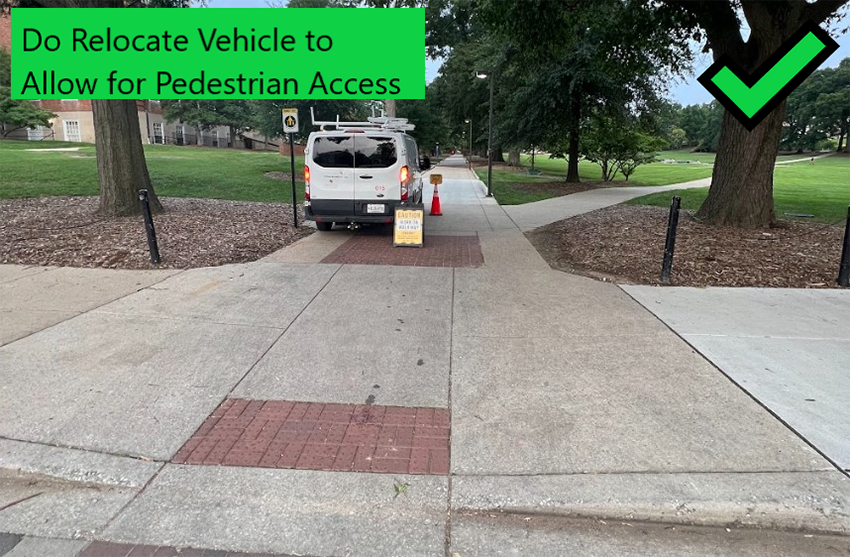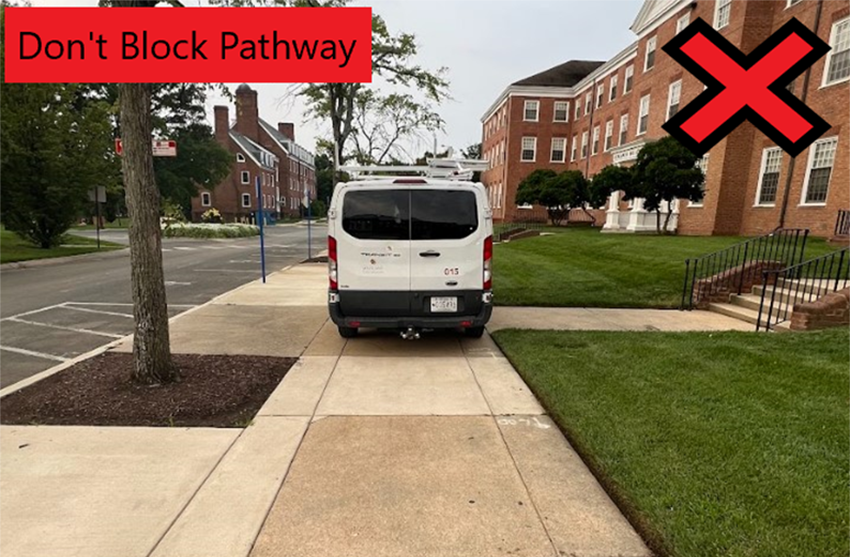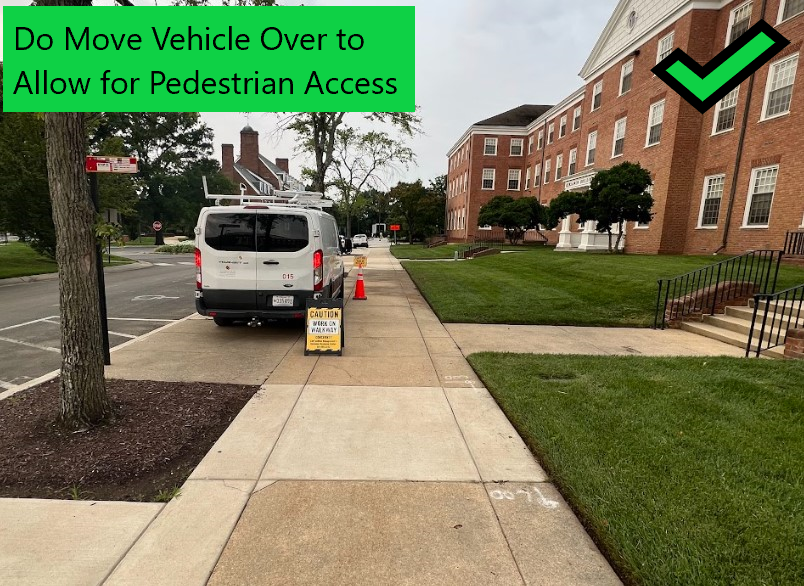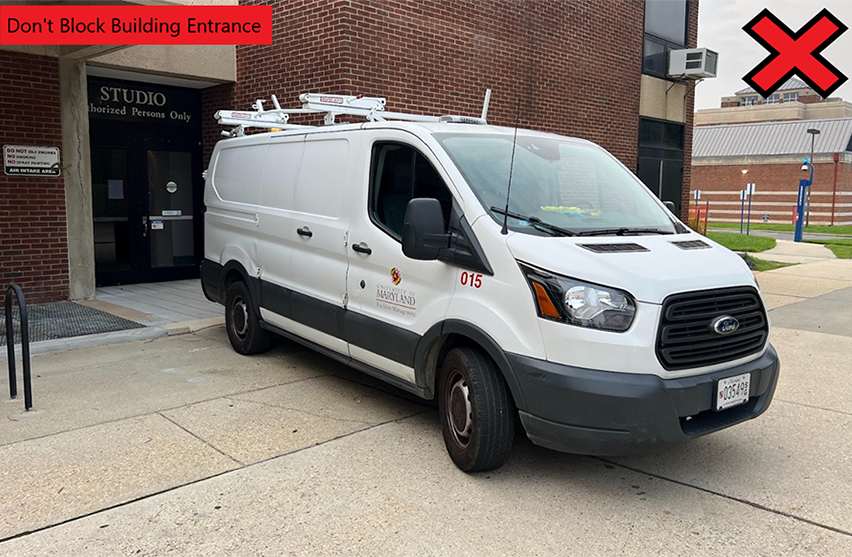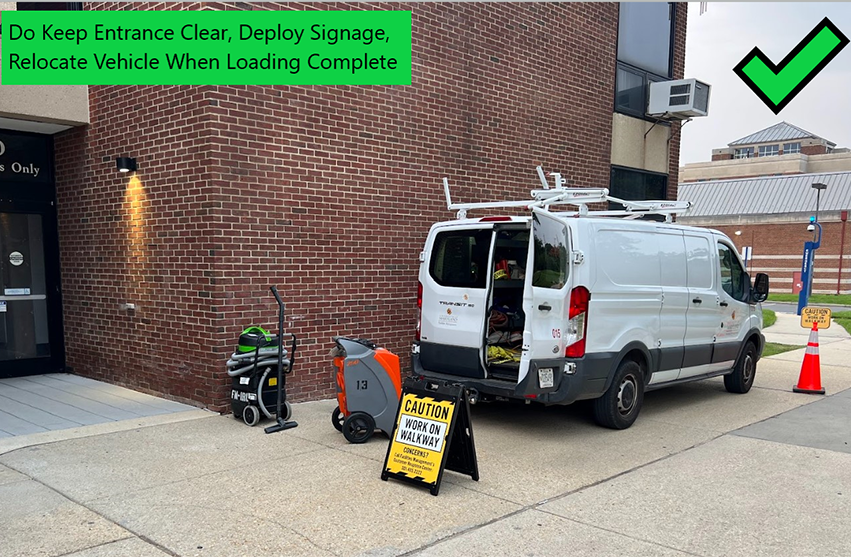Wheels Off Walkways - Standard Operating Procedure
Purpose
Walkways are critical pathways for pedestrians including those with mobility challenges who navigate the UMD campus. Obstructing walkways with parked vehicles or equipment can cause significant barriers to mobility. In addition, blocking accessible walkways can result in individuals with disabilities having to navigate onto the street, which is not only dangerous but also violates their rights to equal access. Therefore, it is essential to recognize the importance of keeping walkways clear of vehicles and passable to promote inclusivity and ensure that individuals can move around independently and safely.
With limited parking on the campus, parking on walkways may be necessary at times for situations that involve planned or unplanned circumstances. The campus community recognizes that there are situations where parking on a walkway is necessary to respond to an urgent situation. Impacts to walkways for routine work are also acceptable with proper coordination and communication. The following procedure is to be used in applicable instances but the default expectation is that walkways are not to be blocked. Working together, UMD Staff can complete their work and limit disruptions to the campus community.
Situations where parking on a walkway is acceptable: Unplanned utility outages, support for emergency responders (fire, rescue, police), critical safety incidents, tool and material unloading, exterior grounds work, planned projects with coordination. Planned projects require the following to be done in advance of the work; stakeholder coordination, CRC communication notice, and detour signage.
Situations where parking on a walkway is not acceptable: Routine work (e.g. WTs not classified as “HIGH Priority”), administrative tasks (e.g. UID card replacement), breaks and meal periods. (State vehicles may be used only to accomplish authorized State business. FM Vehicle Policy). Attending a meeting or campus event. During Snow removal events. When not actively engaged in work, for convenience, if parking is available, blocking complete access, creates a dangerous situation.
Procedure
- Do not block ramps, entryways, crosswalks, or curb cuts. Keep a passable path of 36” or greater. Vehicles must be moved from the walkway to a parking space as soon as possible.
- Activate vehicle response lighting or turn on vehicle hazard lights.
- Look for any pedestrians and verify the walkway is clear before proceeding.
- When parking on a walkway, to the extent possible, limit the amount of the walk that is being blocked. Maintain at least 36” of passable path. Park vehicles to the left or right side to keep the maximum amount of walkway open and available for use.
- Deploy warning devices, such as sign boards, cones, crossbars, and directional signage to direct pedestrians safely around the vehicle. Warning devices will be placed to the front, rear, and side(s) of the vehicle.
- When loading or unloading tools and materials:
- Minimize the amount of time spent on the walkway.
- When possible, have additional staff available to help load and unload.
- Items will be staged at un/loading site before bringing the vehicle onto the walkway.
- As soon as the vehicle has been un/loaded, move the vehicle to a parking space.
- If closing a walkway completely (where 36” of path is not available), deploy signage to direct pedestrians to an accessible detour route.
- If possible, have someone stay near the vehicle to direct traffic or to move the vehicle, if needed.
- Signage available from FM Sign shop. This signage shall have the number to the Customer Response Center (CRC) posted. Also, the signage shall have colors that are reflective and easy to see at night. (Yellow or Orange).
- If parking on a walkway is required and the vehicle is partially on the walkway and on the landscape, please minimize damage to the landscape. Between trees, shrubs and turf, the University has tens of millions of dollars invested in plantings.
- When preparing to leave the walkway, retrieve all tools and materials, along with the cones and signage.
- Turn on the vehicle hazard lights.
- Continuously look both ways while the vehicle is moving below 5 mph (be aware of pedestrians, scooters, bikes etc..)
- Pull off the curb, slowly under 5 mph.
- When the vehicle is 10-15 feet away from the site, turn hazard lights off.
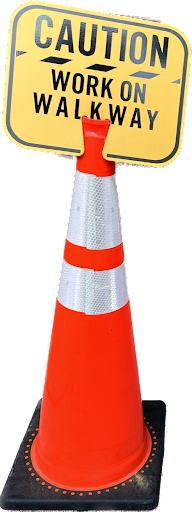
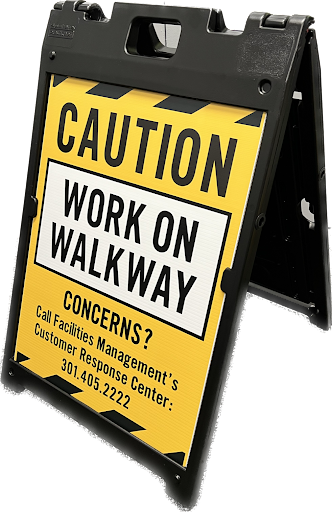
Dos and Don'ts

